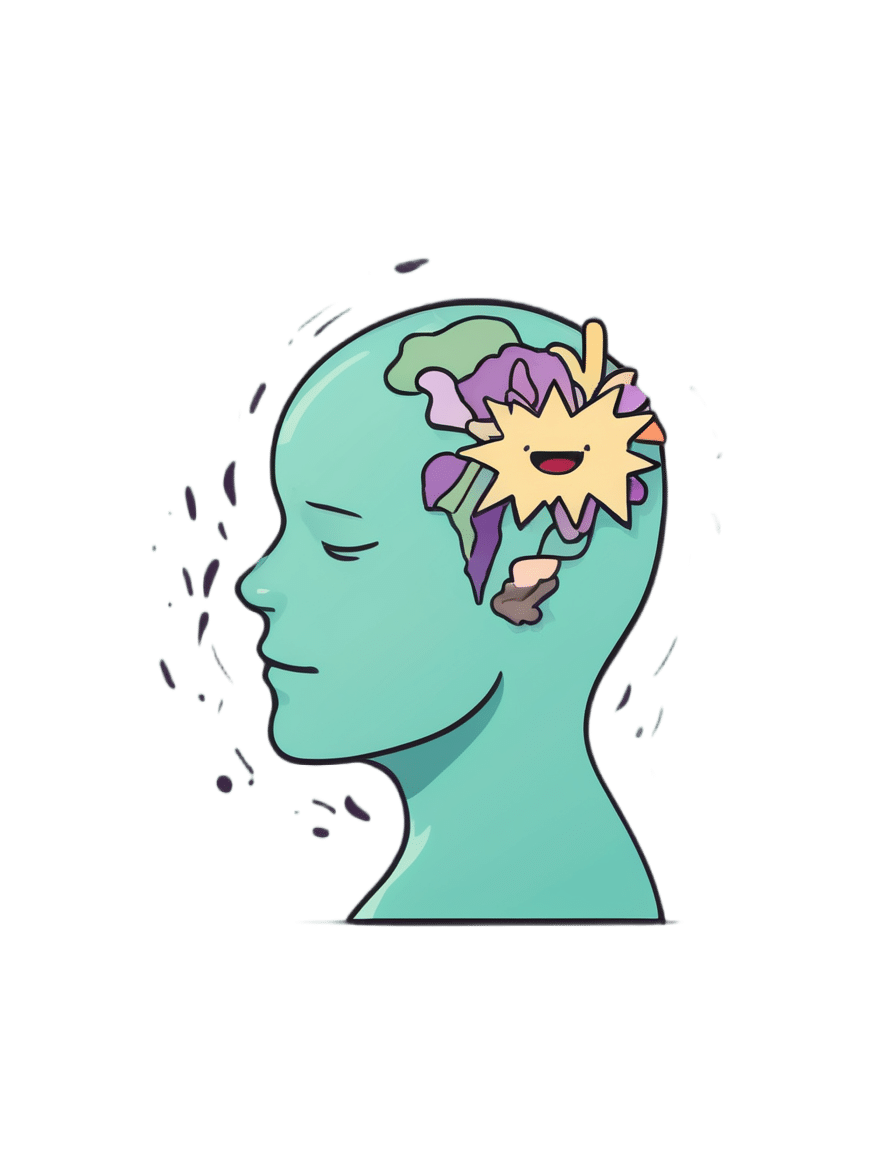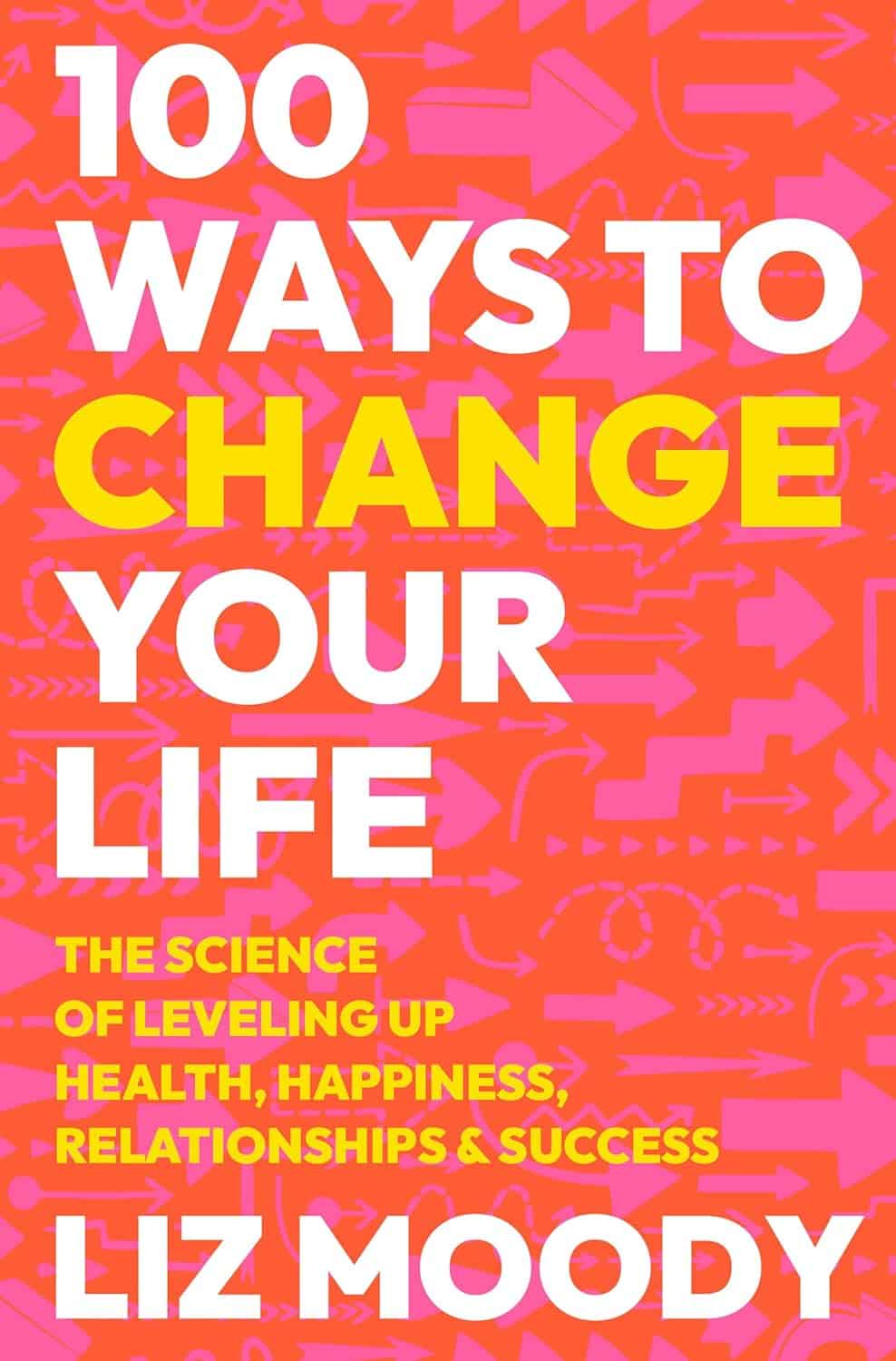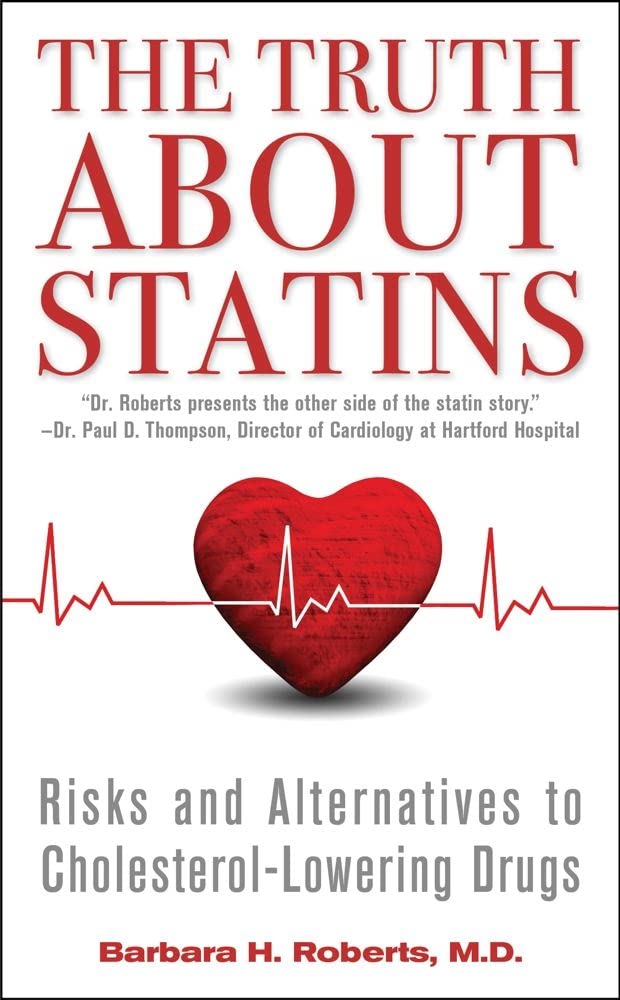
In Crisis, She Went to an Illinois Facility. Two Years Later, She Still Isn’t Able to Leave.
10almonds is reader-supported. We may, at no cost to you, receive a portion of sales if you purchase a product through a link in this article.
Series: Culture of Cruelty:Inside Illinois’ Mental Health System
State-run facilities in Illinois are supposed to care for people with mental and developmental disabilities. But patients have been subjected to abuse, neglect and staff misconduct for decades, despite calls for change.
Kaleigh Rogers was in crisis when she checked into a state-run institution on Illinois’ northern border two years ago. Rogers, who has cerebral palsy, had a mental health breakdown during the pandemic and was acting aggressively toward herself and others.
Before COVID-19, she had been living in a small group home; she had been taking college classes online and enjoyed going out with friends, volunteering and going to church. But when her aggression escalated, she needed more medical help than her community setting could provide.
With few viable options for intervention, she moved into Kiley Developmental Center in Waukegan, a much larger facility. There, she says she has fewer freedoms and almost nothing to do, and was placed in a unit with six other residents, all of whom are unable to speak. Although the stay was meant to be short term, she’s been there for two years.
The predicament facing Rogers and others like her is proof, advocates say, that the state is failing to live up to the promise it made in a 13-year-old federal consent decree to serve people in the community.
Rogers, 26, said she has lost so much at Kiley: her privacy, her autonomy and her purpose. During dark times, she cries on the phone to her mom, who has reduced the frequency of her visits because it is so upsetting for Rogers when her mom has to leave.
The 220-bed developmental center about an hour north of Chicago is one of seven in the state that have been plagued by allegations of abuse and other staff misconduct. The facilities have been the subject of a monthslong investigation by Capitol News Illinois and ProPublica about the state’s failures to correct poor conditions for people with intellectual and developmental disabilities. The news organizations uncovered instances of staff who had beaten, choked, thrown, dragged and humiliated residents inside the state-run facilities.
Advocates hoped the state would become less reliant on large institutions like these when they filed a lawsuit in 2005, alleging that Illinois’ failure to adequately fund community living options ended up segregating people with intellectual and developmental disabilities from society by forcing them to live in institutions. The suit claimed Illinois was in direct violation of a 1999 U.S. Supreme Court decision in another case, which found that states had to serve people in the most integrated setting of their choosing.
Negotiations resulted in a consent decree, a court-supervised improvement plan. The state agreed to find and fund community placements and services for individuals covered by the consent decree, thousands of adults with intellectual and developmental disabilities across Illinois who have put their names on waiting lists to receive them.
Now, the state has asked a judge to consider ending the consent decree, citing significant increases in the number of people receiving community-based services. In a court filing in December, Illinois argued that while its system is “not and never will be perfect,” it is “much more than legally adequate.”
But advocates say the consent decree should not be considered fulfilled as long as people with disabilities continue to live without the services and choices that the state promised.
Across the country, states have significantly downsized or closed their large-scale institutions for people with developmental and intellectual disabilities in favor of smaller, more integrated and more homelike settings.
But in Illinois, a national outlier, such efforts have foundered. Efforts to close state-operated developmental centers have been met with strong opposition from labor unions, the communities where the centers are located, local politicians and some parents.
U.S. District Judge Sharon Johnson Coleman in Chicago is scheduled in late summer to decide whether the state has made enough progress in building up community supports to end the court’s oversight.
For some individuals like Rogers, who are in crisis or have higher medical or behavioral challenges, the state itself acknowledges that it has struggled to serve them in community settings. Rogers said she’d like to send this message on behalf of those in state-operated developmental centers: “Please, please get us out once and for all.”
“Living Inside a Box”
Without a robust system of community-based resources and living arrangements to intervene during a crisis, state-operated developmental centers become a last resort for people with disabilities. But under the consent decree agreement, the state, Equip for Equality argues, is expected to offer sufficient alternative crisis supports to keep people who want them out of these institutions.
In a written response to questions, Rachel Otwell, a spokesperson for the Illinois Department of Human Services, said the state has sought to expand the menu of services it offers people experiencing a crisis, in an effort to keep them from going into institutions. But Andrea Rizor, a lawyer with Equip for Equality, said, “They just don’t have enough to meet the demand.”
For example, the state offers stabilization homes where people can live for 90 days while they receive more intensive support from staff serving the homes, including medication reviews and behavioral interventions. But there are only 32 placements available — only four of them for women — and the beds are always full, Rizor said.
Too many people, she said, enter a state-run institution for short-term treatment and end up stuck there for years for various reasons, including shortcomings with the state’s discharge planning and concerns from providers who may assume those residents to be disruptive or difficult to serve without adequate resources.
That’s what happened to Rogers. Interruptions to her routine and isolation during the pandemic sent her anxiety and aggressive behaviors into overdrive. The staff at her community group home in Machesney Park, unsure of what to do when she acted out, had called the police on several occasions.
Doctors also tried to intervene, but the cocktail of medications she was prescribed turned her into a “zombie,” Rogers said. Stacey Rogers, her mom and legal guardian, said she didn’t know where else to turn for help. Kiley, she said, “was pretty much the last resort for us,” but she never intended for her daughter to be there for this long. She’s helped her daughter apply to dozens of group homes over the past year. A few put her on waitlists; most have turned her down.
“Right now, all she’s doing is living inside a box,” Stacey Rogers said.
Although Rogers gave the news organizations permission to ask about her situation, IDHS declined to comment, citing privacy restrictions. In general, the IDHS spokesperson said that timelines for leaving institutions are “specific to each individual” and their unique preferences, such as where they want to live and speciality services they may require in a group home.
Equip for Equality points to people like Rogers to argue that the consent decree has not been sufficiently fulfilled. She’s one of several hundred in that predicament, the organization said.
“If the state doesn’t have capacity to serve folks in the community, then the time is not right to terminate this consent decree, which requires community capacity,” Rizor said.
Equip for Equality has said that ongoing safety issues in these facilities make it even more important that people covered by the consent decree not be placed in state-run institutions. In an October court brief, citing the news organizations’ reporting, Equip for Equality said that individuals with disabilities who were transferred from community to institutional care in crisis have “died, been raped, and been physically and mentally abused.”
Over the summer, an independent court monitor assigned to provide expert opinions in the consent decree, in a memo to the court, asked a judge to bar the state from admitting those individuals into its institutions.
In its December court filing, the state acknowledged that there are some safety concerns inside its state-run centers, “which the state is diligently working on,” as well as conditions inside privately operated facilities and group homes “that need to be addressed.” But it also argued that conditions inside its facilities are outside the scope of the consent decree. The lawsuit and consent decree specifically aimed to help people who wanted to move out of large private institutions, but plaintiffs’ attorneys argue that the consent decree prohibits the state from using state-run institutions as backup crisis centers.
In arguing to end the consent decree, the state pointed to significant increases in the number of people served since it went into effect. There were about 13,500 people receiving home- and community-based services in 2011 compared with more than 23,000 in 2023, it told the court.
The state also said it has significantly increased funding that is earmarked to pay front-line direct support professionals who assist individuals with daily living needs in the community, such as eating and grooming.
In a statement to reporters, the human services department called these and other improvements to the system “extraordinary.”
Lawyers for the state argued that those improvements are enough to end court oversight.
“The systemic barriers that were in place in 2011 no longer exist,” the state’s court filing said.
Among those who were able to find homes in the community is Stanley Ligas, the lead plaintiff in the lawsuit that led to the consent decree. When it was filed in 2005, he was living in a roughly 100-bed private facility but wanted to move into a community home closer to his sister. The state refused to fund his move.
Today, the 56-year-old lives in Oswego with three roommates in a house they rent. All of them receive services to help their daily living needs through a nonprofit, and Ligas has held jobs in the community: He previously worked in a bowling alley and is now paid to make public appearances to advocate for others with disabilities. He lives near his sister, says he goes on family beach vacations and enjoys watching professional wrestling with friends. During an interview with reporters, Ligas hugged his caregiver and said he’s “very happy” and hopes others can receive the same opportunities he’s been given.
While much of that progress has come only in recent years, under Gov. JB Pritzker’s administration, it has proven to be vulnerable to political and economic changes. After a prolonged budget stalemate, the court in 2017 found Illinois out of compliance with the Ligas consent decree.
At the time, late and insufficient payments from the state had resulted in a staffing crisis inside community group homes, leading to escalating claims of abuse and neglect and failures to provide routine services that residents relied on, such as help getting to work, social engagements and medical appointments in the community. Advocates worry about what could happen under a different administration, or this one, if Illinois’ finances continue to decline as projected.
“I acknowledge the commitments that this administration has made. However, because we had so far to come, we still have far to go,” said Kathy Carmody, chief executive of The Institute on Public Policy for People with Disabilities, which represents providers.
While the wait for services is significantly shorter than it was when the consent decree went into effect in 2011, there are still more than 5,000 adults who have told the state they want community services but have yet to receive them, most of them in a family home. Most people spend about five years waiting to get the services they request. And Illinois continues to rank near the bottom in terms of the investment it makes in community-based services, according to a University of Kansas analysis of states’ spending on services for people with intellectual and developmental disabilities.
Advocates who believe the consent decree has not been fulfilled contend that Illinois’ continued reliance on congregate settings has tied up funds that could go into building up more community living options. Each year, Illinois spends about $347,000 per person to care for those in state-run institutions compared with roughly $91,000 per person spent to support those living in the community.
For Rogers, the days inside Kiley are long, tedious and sometimes chaotic. It can be stressful, but Rogers told reporters that she uses soothing self-talk to calm herself when she feels sad or anxious.
“I tell myself: ‘You are doing good. You are doing great. You have people outside of here that care about you and cherish you.’”
This article is republished from ProPublica under a Creative Commons license. Read the original article.
Don’t Forget…
Did you arrive here from our newsletter? Don’t forget to return to the email to continue learning!
Recommended
Learn to Age Gracefully
Join the 98k+ American women taking control of their health & aging with our 100% free (and fun!) daily emails:
-
White Bread vs White Pasta – Which Is Healthier?
10almonds is reader-supported. We may, at no cost to you, receive a portion of sales if you purchase a product through a link in this article.
Our Verdict
When comparing a white bread to a white pasta, we picked the pasta.
Why?
Neither are great for the health! But like for like, the glycemic index of the bread is usually around 150% of the glycemic index for pasta.
All that said, we heartily recommend going for wholegrain in either case!
Bonus tip: cooking pasta “al dente”, so it is still at least a little firm to the bite, results in a lower GI compared to being boiled to death.
Bonus bonus tip: letting pasta cool increases resistant starches. You can then reheat the pasta without losing this benefit.
Please don’t put it in the microwave though; you will make an Italian cry. Instead, simply put it in a colander and pour boiling water over it, and then serve in your usual manner (a good approach if serving it separately is: put it in the serving bowl/dish/pan, drizzle a little extra virgin olive oil and a little cracked black pepper, stir to mix those in, and serve)
Enjoy!
Share This Post
-
Squat Variations for Painful Knees (No More Pain!)
10almonds is reader-supported. We may, at no cost to you, receive a portion of sales if you purchase a product through a link in this article.
Having bad knees can be a bit of a catch-22; you want to squat to make them stronger, but you can’t do that because your knees are not good. But, there are ways to do it!
Dr. Alyssa Kuhn, a doctor of physical therapy, advises:
Gently does it
Ten ways to choose from:
- Pool Squats: performed in a pool for joint-friendly support. Can use both hands, one hand, or no support. Focus on sitting back and standing up, aiming for 10–20 reps.
- Supported Squats: use a sink, rings, or handles for support. Stand a distance away and sit back while keeping your knees behind your heels. Perform 10–20 reps for 2–3 sets.
- Chair Loop Squats: use a resistance band around your knees while sitting on a chair. Press your knees outward as you stand and sit to strengthen hip and knee stability. Do 8–12 reps for 2–3 sets.
- Heel Elevated Squats: place your heels on dumbbells to shift emphasis to thighs and reduce knee strain. Ideal for stiff ankles or back tightness. Perform 10–15 reps for 2–3 sets.
- Sumo Squats: a wide stance squat, good for hip strength and reducing knee stress. Adjust your foot positioning for comfort. Perform 15–20 reps for 2–3 sets.
- Chair Squats: hold a weight close to your chest while sitting and standing from a chair. Can use kettlebells or dumbbells. Do 8–10 reps for 2–3 sets.
- Band Squats: use a resistance band secured behind your knees to provide support and encourage proper squat mechanics. Perform 5–12 reps for 2–3 sets.
- Modified Single Leg Squat: sit-to-stand using one leg with the other as a kickstand. Adjust your foot position for difficulty. Perform 8–12 reps per side for 2–3 sets.
- Weighted Squats: add weight using dumbbells or a barbell. Maintain an upright torso. Adjust the weight and reps based on difficulty, and do 5–10 reps for 2–4 sets.
- Split Squat: a stationary lunge, keeping your feet in place and lowering straight down. Focus on your front leg while keeping balance. Can add weight if you want. Perform 5–12 reps per side based on difficulty.
For more on each of these plus visual demonstrations, enjoy:
Click Here If The Embedded Video Doesn’t Load Automatically!
Want to learn more?
You might also like to read:
Take care!
Share This Post
-
Why You Can’t Skimp On Amino Acids
10almonds is reader-supported. We may, at no cost to you, receive a portion of sales if you purchase a product through a link in this article.
Our body requires 20 amino acids (the building blocks of protein), 9 of which it can’t synthesize (thus called: “essential”) and absolutely must get from food. Normally, we get these amino acids from protein in our diet, and we can also supplement them by taking amino acid supplements if we wish.
Specifically, we require (per kg of bodyweight) a daily average of:
- Histidine: 10 mg
- Isoleucine: 20 mg
- Leucine: 39 mg
- Lysine: 30 mg
- Methionine: 10.4 mg
- Phenylalanine*: 25 mg
- Threonine: 15 mg
- Tryptophan: 4 mg
- Valine: 26 mg
*combined with the non-essential amino acid tyrosine
Source: Protein and Amino Acid Requirements In Human Nutrition: WHO Technical Report
Why this matters
A lot of attention is given to protein, and making sure we get enough of it, especially as we get older, because the risk of sarcopenia (muscle mass loss) increases with age:
However, not every protein comes with a complete set of essential amino acids, and/or have only trace amounts of of some amino acids, meaning that a dietary deficiency can arrive if one’s diet is too restrictive.
And, if we become deficient in even just one amino acid, then bad things start to happen quite soon. We only have so much space, so we’re going to oversimplify here, but:
- Histidine: is needed to produce histamine (vital for immune responses, amongst other things), and is also important for maintaining the myelin sheaths on nerve cells.
- Isoleucine: is very involved in muscle metabolism and makes up the bulk of muscle tissue.
- Leucine: is critical for muscle synthesis and repair, as well as wound healing in general, and blood sugar regulation.
- Lysine: is also critical in muscle synthesis, as well as calcium absorption and hormone production, as well as making collagen.
- Methionine: is very important for energy metabolism, zinc absorption, and detoxification.
- Phenylalanine: is a necessary building block of a lot of neurotransmitters, as well as being a building block of some amino acids not listed here (i.e., the ones your body synthesizes, but can’t without phenylalanine).
- Threonine: is mostly about collagen and elastin production, and is also very important for your joints, as well as fat metabolism.
- Tryptophan: is the body’s primary precursor to serotonin, so good luck making the latter without the former.
- Valine: is mostly about muscle growth and regeneration.
So there you see, the ill effects of deficiency can range from “muscle atrophy” to “brain stops working” and “bones fall apart” and more. In short, any essential amino acid deficiency not remedied will ultimately result in death; we literally become non-viable as organisms without these 9 things.
What to do about it (the “life hack” part)
Firstly, if you eat a lot of animal products, those are “complete” proteins, meaning that they contain all 9 essential amino acids in sensible quantities. The reason that all animal products have these, is because they are just as essential for the other animals as they are for us, so they, just like us, must consume (and thus contain) them.
However, a lot of animal products come with other health risks:
Do We Need Animal Products To Be Healthy? ← this covers which animal products are definitely very health-risky, and which are probably fine according to current best science
…so many people may prefer to get more (or possibly all) dietary protein from plants.
However, plants, unlike us, do not need to consume all 9 essential amino acids, and this may or may not contain them all.
Soy is famously a “complete” protein insofar as it has all the amino acids we need.
But what if you’re allergic to soy?
Good news! Peas are also a “complete” protein and will do the job just fine. They’re also usually cheaper.
Final note
An oft-forgotten thing is that some other amino acids are “conditionally essential”, meaning that while we can technically synthesize them, sometimes we can’t synthesize enough and must get them from our diet.
The conditions that trigger this “conditionally essential” status are usually such things as fighting a serious illness, recovering from a serious injury, or pregnancy—basically, things where your body has to work at 110% efficiency if it wants to get through it in one piece, and that extra 10% has to come from somewhere outside the body.
Examples of commonly conditionally essential amino acids are arginine and glycine.
Arginine is critical for a lot of cell-signalling processes as well as mitochondrial function, as well as being a precursor to other amino acids, including creatine.
As for glycine?
Check out: The Sweet Truth About Glycine
Enjoy!
Share This Post
Related Posts
-
Women and Minorities Bear the Brunt of Medical Misdiagnosis
10almonds is reader-supported. We may, at no cost to you, receive a portion of sales if you purchase a product through a link in this article.
Charity Watkins sensed something was deeply wrong when she experienced exhaustion after her daughter was born.
At times, Watkins, then 30, had to stop on the stairway to catch her breath. Her obstetrician said postpartum depression likely caused the weakness and fatigue. When Watkins, who is Black, complained of a cough, her doctor blamed the flu.
About eight weeks after delivery, Watkins thought she was having a heart attack, and her husband took her to the emergency room. After a 5½-hour wait in a North Carolina hospital, she returned home to nurse her baby without seeing a doctor.
When a physician finally examined Watkins three days later, he immediately noticed her legs and stomach were swollen, a sign that her body was retaining fluid. After a chest X-ray, the doctor diagnosed her with heart failure, a serious condition in which the heart becomes too weak to adequately pump oxygen-rich blood to organs throughout the body. Watkins spent two weeks in intensive care.
She said a cardiologist later told her, “We almost lost you.”
Watkins is among 12 million adults misdiagnosed every year in the U.S.
In a study published Jan. 8 in JAMA Internal Medicine, researchers found that nearly 1 in 4 hospital patients who died or were transferred to intensive care had experienced a diagnostic error. Nearly 18% of misdiagnosed patients were harmed or died.
In all, an estimated 795,000 patients a year die or are permanently disabled because of misdiagnosis, according to a study published in July in the BMJ Quality & Safety periodical.
Some patients are at higher risk than others.
Women and racial and ethnic minorities are 20% to 30% more likely than white men to experience a misdiagnosis, said David Newman-Toker, a professor of neurology at Johns Hopkins School of Medicine and the lead author of the BMJ study. “That’s significant and inexcusable,” he said.
Researchers call misdiagnosis an urgent public health problem. The study found that rates of misdiagnosis range from 1.5% of heart attacks to 17.5% of strokes and 22.5% of lung cancers.
Weakening of the heart muscle — which led to Watkins’ heart failure — is the most common cause of maternal death one week to one year after delivery, and is more common among Black women.
Heart failure “should have been No. 1 on the list of possible causes” for Watkins’ symptoms, said Ronald Wyatt, chief science and chief medical officer at the Society to Improve Diagnosis in Medicine, a nonprofit research and advocacy group.
Maternal mortality for Black mothers has increased dramatically in recent years. The United States has the highest maternal mortality rate among developed countries. According to the Centers for Disease Control and Prevention, non-Hispanic Black mothers are 2.6 times as likely to die as non-Hispanic white moms. More than half of these deaths take place within a year after delivery.
Research shows that Black women with childbirth-related heart failure are typically diagnosed later than white women, said Jennifer Lewey, co-director of the pregnancy and heart disease program at Penn Medicine. That can allow patients to further deteriorate, making Black women less likely to fully recover and more likely to suffer from weakened hearts for the rest of their lives.
Watkins said the diagnosis changed her life. Doctors advised her “not to have another baby, or I might need a heart transplant,” she said. Being deprived of the chance to have another child, she said, “was devastating.”
Racial and gender disparities are widespread.
Women and minority patients suffering from heart attacks are more likely than others to be discharged without diagnosis or treatment.
Black people with depression are more likely than others to be misdiagnosed with schizophrenia.
Minorities are less likely than whites to be diagnosed early with dementia, depriving them of the opportunities to receive treatments that work best in the early stages of the disease.
Misdiagnosis isn’t new. Doctors have used autopsy studies to estimate the percentage of patients who died with undiagnosed diseases for more than a century. Although those studies show some improvement over time, life-threatening mistakes remain all too common, despite an array of sophisticated diagnostic tools, said Hardeep Singh, a professor at Baylor College of Medicine who studies ways to improve diagnosis.
“The vast majority of diagnoses can be made by getting to know the patient’s story really well, asking follow-up questions, examining the patient, and ordering basic tests,” said Singh, who is also a researcher at Houston’s Michael E. DeBakey VA Medical Center. When talking to people who’ve been misdiagnosed, “one of the things we hear over and over is, ‘The doctor didn’t listen to me.’”
Racial disparities in misdiagnosis are sometimes explained by noting that minority patients are less likely to be insured than white patients and often lack access to high-quality hospitals. But the picture is more complicated, said Monika Goyal, an emergency physician at Children’s National Hospital in Washington, D.C., who has documented racial bias in children’s health care.
In a 2020 study, Goyal and her colleagues found that Black kids with appendicitis were less likely than their white peers to be correctly diagnosed, even when both groups of patients visited the same hospital.
Although few doctors deliberately discriminate against women or minorities, Goyal said, many are biased without realizing it.
“Racial bias is baked into our culture,” Goyal said. “It’s important for all of us to start recognizing that.”
Demanding schedules, which prevent doctors from spending as much time with patients as they’d like, can contribute to diagnostic errors, said Karen Lutfey Spencer, a professor of health and behavioral sciences at the University of Colorado-Denver. “Doctors are more likely to make biased decisions when they are busy and overworked,” Spencer said. “There are some really smart, well-intentioned providers who are getting chewed up in a system that’s very unforgiving.”
Doctors make better treatment decisions when they’re more confident of a diagnosis, Spencer said.
In an experiment, researchers asked doctors to view videos of actors pretending to be patients with heart disease or depression, make a diagnosis, and recommend follow-up actions. Doctors felt far more certain diagnosing white men than Black patients or younger women.
“If they were less certain, they were less likely to take action, such as ordering tests,” Spencer said. “If they were less certain, they might just wait to prescribe treatment.”
It’s easy to see why doctors are more confident when diagnosing white men, Spencer said. For more than a century, medical textbooks have illustrated diseases with stereotypical images of white men. Only 4.5% of images in general medical textbooks feature patients with dark skin.
That may help explain why patients with darker complexions are less likely to receive a timely diagnosis with conditions that affect the skin, from cancer to Lyme disease, which causes a red or pink rash in the earliest stage of infection. Black patients with Lyme disease are more likely to be diagnosed with more advanced disease, which can cause arthritis and damage the heart. Black people with melanoma are about three times as likely as whites to die within five years.
The covid-19 pandemic helped raise awareness that pulse oximeters — the fingertip devices used to measure a patient’s pulse and oxygen levels — are less accurate for people with dark skin. The devices work by shining light through the skin; their failures have delayed critical care for many Black patients.
Seven years after her misdiagnosis, Watkins is an assistant professor of social work at North Carolina Central University in Durham, where she studies the psychosocial effects experienced by Black mothers who survive severe childbirth complications.
“Sharing my story is part of my healing,” said Watkins, who speaks to medical groups to help doctors improve their care. “It has helped me reclaim power in my life, just to be able to help others.”
KFF Health News is a national newsroom that produces in-depth journalism about health issues and is one of the core operating programs at KFF—an independent source of health policy research, polling, and journalism. Learn more about KFF.
Subscribe to KFF Health News’ free Morning Briefing.
Don’t Forget…
Did you arrive here from our newsletter? Don’t forget to return to the email to continue learning!
Learn to Age Gracefully
Join the 98k+ American women taking control of their health & aging with our 100% free (and fun!) daily emails:
-
100 Ways to Change Your Life – by Liz Moody
10almonds is reader-supported. We may, at no cost to you, receive a portion of sales if you purchase a product through a link in this article.
Sometimes we crave changing things up, just to feel something new. This can result in anything from bad haircut decisions or impulsive purchases, to crashing and burning-out of a job, project, or relationship. It doesn’t have to be that way, though!
This book brings us (as the title suggest) 100 evidence-based ways of changing things up in a good way—small things that can make a big difference in many areas of life.
In terms of format, these are presented in 100 tiny chapters, each approximately 2 pages long (obviously it depends on the edition, but you get the idea). Great to read in any of at least three ways:
- Cover-to-cover
- One per day for 100 days
- Look up what you need on an ad hoc basis
Bottom line: even if you already do half of these things, the other half will each compound your health happiness one-by-one as you add them. This is a very enjoyable and practical book!
Click here to check out 100 Ways to Change Your Life, and level-up yours!
Don’t Forget…
Did you arrive here from our newsletter? Don’t forget to return to the email to continue learning!
Learn to Age Gracefully
Join the 98k+ American women taking control of their health & aging with our 100% free (and fun!) daily emails:
-
The Truth About Statins – by Barbara H. Roberts, M.D.
10almonds is reader-supported. We may, at no cost to you, receive a portion of sales if you purchase a product through a link in this article.
All too often, doctors looking to dispense a “quick fix” will prescribe from their playbook of a dozen or so “this will get you out of my office” drugs. Most commonly, things that treat symptoms rather than the cause. Sometimes, this can be fine! For example, in some cases, painkillers and antidepressants can make a big improvement to people’s lives. What about statins, though?
Prescribed to lower cholesterol, they broadly do exactly that. However…
Dr. Roberts wants us to know that we could be missing the big picture of heart health, and making a potentially fatal mistake.
This is not to say that the book argues that statins are necessarily terrible, or that they don’t have their place. Just, we need to understand what they will and won’t do, and make an informed choice.
To which end, she does advise regards when statins can help the most, and when they may not help at all. She also covers the questions to ask if your doctor wants to prescribe them. And—all so frequently overlooked—the important differences between men’s and women’s heart health, and the implications these have for the efficacy (or not) of statins.
With regard to the “alternatives to cholesterol-lowering drugs” promised in the subtitle… we won’t keep any secrets here:
Dr. Roberts (uncontroversially) recommends the Mediterranean diet. She also provides two weeks’ worth of recipes for such, in the final part of the book.
All in all, an important book to read if you or a loved one are taking, or thinking of taking, statins.
Pick up your copy of The Truth About Statins on Amazon today!
Don’t Forget…
Did you arrive here from our newsletter? Don’t forget to return to the email to continue learning!
Learn to Age Gracefully
Join the 98k+ American women taking control of their health & aging with our 100% free (and fun!) daily emails:







